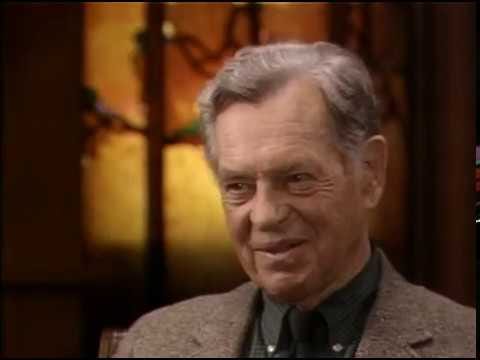Original article
James C Eisenach. Gadgeteering for Pain Relief: The 2021 John W. Severinghaus Lecture on Translational Science. Anesthesiology. 2022 Jun 1;136(6):888-900. PMID: 35482967
Today’s Pediatric Anesthesia Article of the Day was delivered by Dr. James Eisenach in his 2021 ASA John W. Severinghaus Annual Lecture on Translational Science. The framework of the article and lecture is “based on lessons from Joseph Campbell and The Power of Myth, a 1988 Public Broadcasting Service documentary series in which Bill Moyers interviewed Joseph Campbell, an author and scholar of myths across time and cultures”. I (MY) remember seeing this on PBS when it first aired and just downloaded it on audible. It’s better than I remembered.
Today’s PAAD article details the remarkably similar journeys of discovery of Dr. James Eisenach and his mentor and colleague, Dr. John Severinghaus. Along the way, we meet many of the giants of modern anesthesiology, Drs. Ralph Waters, Ted Eger, Steve Shafer, Ron Miller, Tony Yaksh, Tom Hornbein, Don Stanski, Larry Saidman, and of course John Severinghaus. The role of colleagues, mentors, and mentees in the scientist’s journey is best summed up; ““When you begin to deal with the people who are in the field of your bliss they open doors to you.” 1
Because of the limitations of time and space of the PAAD, we simply cannot do justice to the science in this lecture. Rather, we’ve decided to focus on the journey. We would however encourage all of you to read the article in its entirety to follow the science…both Dr. Eisenach’s successes and failures. More on the failures in a moment.
“One of the most common hero’s journeys can be described largely in three phases (figure 1A). The first starts with leaving the comfort of the familiar to achieve a goal. Next, the hero overcomes, aided by strangers, mentors, and the experience of many trials, and is transformed through these events—in some cases without even achieving the goal. Finally, the hero returns, bringing new life to society through the hero’s own vitality and experience of life’s mystery. You and I are not mythical heroes, but we can follow similar steps in aspects of our lives, including our working careers”1.
“Act I is all about achieving a goal. It begins on a clear day, and the goal, obviously requiring hard work to reach, is visible and the paths to it clear. For many early-stage scientists and certainly for me, the goal translates to “I will show” (fig. 1B). The focus is to prove a concept or create something to address a problem”.1
Along the way, in act II “I will show” the “the path becomes murky, dangers occur, and one can get lost or discouraged”.1 In other words, failure occurs and needs to be seen as an opportunity rather than the end of the journey. I (MY) learned this lesson repeatedly over my lifetime. As a visiting professor at the Imperial College in England, the chairman, my friend, the late Jim Robotham, of blessed memory, told me his daughter couldn’t join us for dinner one night because she was studying for her A level exams. “What are those”? I asked. “It’s one exam that determines the fate of all British high school students…you do well you go to college, you don’t, you go to trade school or become a taxi driver”. Failure was therefore not an option. So unlike America! Indeed, America may be one of the few places on earth where failure is not the end but only the beginning. In fact, taking a chance and failing, is better than not taking a chance and is encouraged because in many ways it is the key to long term success.
Along the journey of discovery, broader questions require entire teams to study. Both Drs. Severinghaus and Eisenach were supported by continuous NIH funding to do this. They gathered large teams. Eisenach would tell his “new fellows in the laboratory at the time that it was a teaching laboratory, that education was its primary purpose, and that science happened as a byproduct. Looking back on this time, I was kidding myself in that I was learning from them as much as I was teaching. As Joseph Campbell states, “Just as the people who you met by chance became effective agents in the structuring of your life, so you have been an agent in the structuring of other lives.”1 This lesson is crucial not only for scientists but for all of us who teach, mentor, and sponsor young (and old) residents, fellow and faculty.
Finally, in Act II is the “wonder why”? As Severinghaus said, “it’s about hypotheses: “I think that a paper which not only does research and reports it but creates a hypothesis which is testable and stimulates other people is perhaps the most important thing you can do. And that’s what I really would like to be remembered for”.1
Finally, we think one of the truly crazy things in this article is that many of the original experiments that are described by Drs. Severinghaus and Eisenach involved research on themselves! They volunteered and underwent spinal taps, epidurals, arterial lines to obtain blood and CSF samples in their research. We are definitely not recommending this to any of you.
Eisenach concludes in the words of Campbell: “If you do follow your bliss you put yourself on a kind of track that has been there all the while waiting for you, and the life that you ought to be living is the one you’re living. I say follow your bliss and don’t be afraid, and doors will open where you didn’t know they were going to be.”
References
1. Eisenach JC: Gadgeteering for Pain Relief: The 2021 John W. Severinghaus Lecture on Translational Science. Anesthesiology 2022; 136: 888-900




